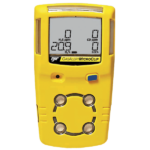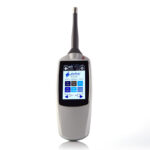For combustible gases, the Lower Explosive Limit (LEL) or Lower Flammable Limit (LFL) is the minimum concentration of vapor in air below which the propagation of the flame does not occur when it contacts an ignition source, such as a spark or flame. In a specific area or space, if the LEL of a gas […]
What pressure levels impact the eardrum?
Previous blogs have discussed human body pressures including blood pressure and optical pressures. However, there are several more pressure measurements for different body locations that need to be considered. For example, the pressures created by different situations on the human ear, and specifically the eardrum, are critically important. High noise environments such as industrial machinery […]
How Matter impacts sensors: part 2
Part 1 of this blog discussed sensors and products compatible with the Connectivity Standards Alliance (CSA) Matter standard that were announced at CES 2024. This included a Matter-compliant bridge that allows previously available products to be Matter-compliant. Compliant products gain the benefits of ease of interconnectivity via Wi-Fi and increased security through Matter’s use of […]
How Matter impacts sensors: part 1
With the support of connectivity companies such as Amazon, Apple, Google, Samsung Electronics, and more, the Connectivity Standards Alliance (CSA) announced the Matter standard in October 2022. The standard’s intent is to provide secure and easy to configure interconnected products for consumers. That type of interconnectivity is essential to smart homes. When Matter 1.2 was […]
How current sensing impacts electric vehicles: part 2
Part 1 of this blog addressed current shunts and Hall-effect sensor designs. This part discusses current transformers and new technology options such as magnetoresistance and even diamond quantum sensors. One of the major issues in today’s electric vehicles (EVs) is the ongoing evolution of technology with the standards evolving as well. In the 100+ years […]
How current sensing impacts electric vehicles: part 1
The need to transition from gasoline and diesel (fossil fuels) powered vehicles to electric vehicles (EVs) to reduce carbon dioxide levels has revealed many controversial issues. Common issues include implementation timing, required infrastructure (including fast charging multi-vehicle systems), legislated rather than consumer-based adoption, ongoing system enhancements, and sources of new critical raw materials. One of […]
How to raise awareness for the necessity of carbon monoxide sensors
Public outcries for reducing carbon dioxide (CO2) emissions to reduce their climate change impact have been widely promoted for more than two decades. However, attention to a more immediate public health problem from carbon monoxide (CO) has not received anywhere near the same level of attention– unless the deaths get news covered. For example, in […]
How is sensing used to detect glaucoma?
The term glaucoma is used to describe a group of eye diseases. In addition to damaging the eye’s optic nerve, glaucoma can result in vision loss and even blindness. About 3 million Americans have glaucoma, but the disease affects more than 67 million people worldwide and is the second leading cause of blindness. Glaucoma occurs […]
How is sensor fusion used in medicine?
Sensor fusion is most frequently discussed in smartphone and automotive control applications. However, the fusion aspect was initially created for military analysis. From the analysis standpoint, for improved decision making, medical applications can and have benefited from sensor fusion. One example is in cancer detection and focused surgery. Specifically, the detection of and surgery for […]
How do diffuse, retroreflective, and through-beam ultrasonic sensors differ?
Ultrasonic frequencies are above the human audio range – higher than 20 kHz. Operating in the ultrasonic frequency range, ultrasonic sensors are commonly used for measuring proximity (distance), determining the level in storage tanks, detecting objects, and more. By measuring the time it takes for sound to travel to and reflect off the surface (time […]











